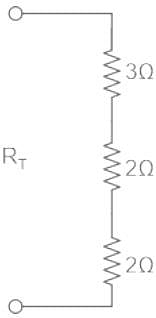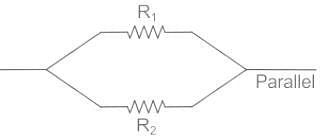Test: Series Circuits & Parallel Networks - Electrical Engineering (EE) MCQ
30 Questions MCQ Test Electrical Engineering SSC JE (Technical) - Test: Series Circuits & Parallel Networks
In a series circuit, which of the parameters remain constant across all circuit elements such as resistor, capacitor and inductor?
Voltage across the 60 Ω resistor is ______.

| 1 Crore+ students have signed up on EduRev. Have you? Download the App |
Calculate the resistance between A and B.

Find the voltage across the 6 ohm resistor.
If there are two bulbs connected in series and one blows out, what happens to the other bulb?
Voltage across a series resistor circuit is proportional to?
Many resistors connected in series will_______
What is the voltage measured across a series short?
What happens to the current in the series circuit if the resistance is doubled?
If two bulbs are connected in parallel and one bulb blows out, what happens to the other bulb?
Calculate the current through the 20 ohm resistor.
In a parallel circuit, with a number of resistors, the voltage across each resistor is ________
Calculate the total current in the circuit.
The voltage across the open circuit is?
The currents entering in the three branches in the same direction of a parallel circuit are 3A, 4A and 5A. What is the current leaving it?
The total resistance between A and B are?
Batteries are generally connected in ______.
In a _________ circuit, the total resistance is greater than the largest resistance in the circuit.
What is the current through R1 and R2 in the following diagram?
Calculate the equivalent resistance between A and B.
A circuit has a resistor with a resistance of 3Ω followed by three parallel branches, each holding a resistor with a resistance of 5Ω. What is the total equivalent resistance of the circuit?
Calculate the equivalent resistance between A and B.

RA and RB are the input resistances of circuits as shown below. The circuits extend infinitely in the direction shown. Which one of the following statements is TRUE?

A network of resistors is connected to a 16 V battery with an internal resistance of 1 Ω, as shown in the figure. Compute the equivalent resistance of the network.

If n identical resistance, each of resistance R, are connected in parallel, the equivalent resistance is:
A practical current source is equivalent to an ideal current source in parallel with ________
What is the voltage across the 5 ohm resistor if current source has current of 17/3 A?

|
23 videos|89 docs|42 tests
|
|
23 videos|89 docs|42 tests
|































